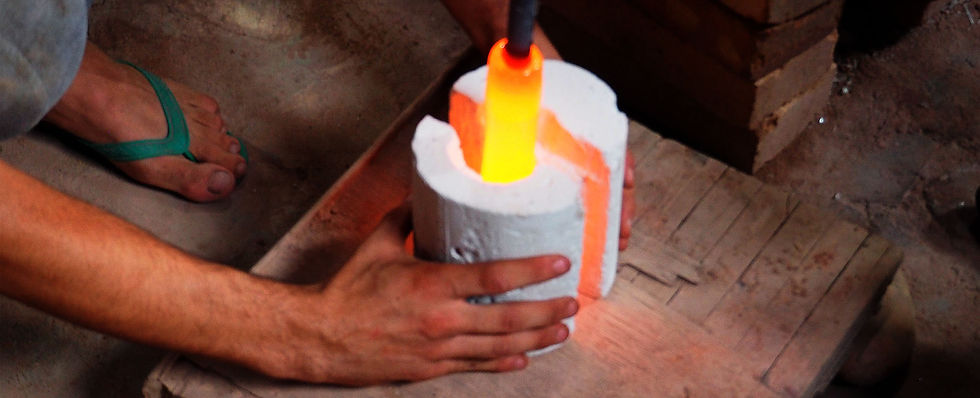



Chandelier
by Bettina Ammann with Khaled 'Ali
Glass on metal structure, 2014
A beautiful chandelier, catching and reflecting light. But there is something disturbing about it. Is it the unusual colour – black? Is it the unusual form? What is this shape exactly? Yes, comes the realisation, the chandelier is made of black glass pieces in the shapes of human bones.
Bettina Amman’s work poses questions about what craft means to us. Is it only something we buy at the market, where price is the main consideration? Or can it tell something about the state of the country? Does Egyptian craft have a political dimension?
The message is simple, yet strong: there are human beings behind such a work. All crafted goods are made by people, with their knowledge and skills, but also with their emotions, fears, echoes of their everyday lives, their experiences and their understanding of them. Each piece in the chandelier was hand-made, each required an amount of physical human effort.
In their work on creating the pieces Bettina and Khaled tried many techniques before arriving at what they found satisfactory. They considered using a mould, but eventually, they ended up with shaping every piece freehand.
Klio Krajewska, curator
Bettina’s work was initially a challenge for Khaled, for he found it difficult to devise a suitable method for producing the bone-shaped pieces she needed for her chandelier. Bettina made a moulding form of stucco, but it was a failure, as the glass did not take the required shapes. The difficult part was the extreme curvature at both ends, which no moulding cast could shape properly. As in the case of Vincent Voillat who was also working in the workshop, the pieces were eventually formed manually.
based on the interview with Taher ‘Abd al-Ghani of ARCHiNOS Architecture




